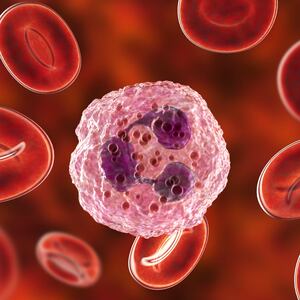Forget the sharks: Tomorrow’s Dr. Evil might take a cue from new research and cut out the middleman entirely. Physics and chemistry researchers from London created lasers that could self-organize and turn on from a random state—blasting a would-be Austin Powers right out of the water.
Lasers have been applied to a wide range of technologies, from medical devices to manufacturing to extraterrestrial detection, but they’re more than just the bright red lights that come to mind. A laser, simply defined, is any device that amplifies light into a focused beam that is all one wavelength.
In the new study published Thursday in Nature Physics, researchers created lasers that could self-organize on their own in response to environmental cues, opening the way for swarms of lasers that can adapt on the fly to changing conditions and meet specific needs. The applications for such a technology could be immense: light shows that don’t have to be programmed, but instead act on their own; next-generation optics that enhance the performance of computers; and microscopic devices that precisely target a malignancy inside the body then dissipate before they can harm healthy tissue would all make use of a refined version of these lasers.
ADVERTISEMENT

As part of the study, the researchers suspended titanium dioxide microparticles in a dye and, and added into the mix a special particle that was coated on one side with light-absorbing material. After high-intensity light was beamed at the double-sided particle for several minutes, the microparticles began to clump around it and act like lasers, emitting light. Turning the light source off triggered the microparticles to spontaneously declump—but turning the source back on resulted in much faster re-accumulation, the researchers found.
Subsequent trials showed these swarms were capable of even bigger behaviors. The researchers experimented with transferring the laser clumps between two double-sided particles—and instead of using the particles competitively, they introduced more heat sources and found that two, three, and four particles could cooperate and collectively boost the laser ability of the titanium particles.
“We asked ourselves if we could create a laser with the ability to blend structure and functionality, to reconfigure itself and cooperate like biological materials do,” senior author and Imperial College London physicist Riccardo Sapienza said in a press release. “Our laser system can reconfigure and cooperate, thus enabling a first step towards emulating the ever-evolving relationship between structure and functionality typical of living materials.”
The researchers wrote in the study that they believe this technology could pave the way toward developing new sensors, computers, light sources, and display technology, “opening the door to a new class of active functional materials.”







